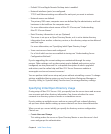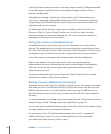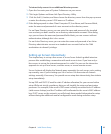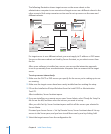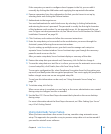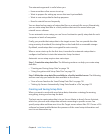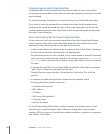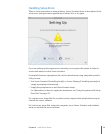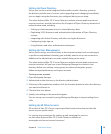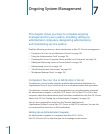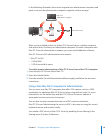
Using Encryption with Setup Data Files
Saved setup data can be encrypted for extra security. Before a server sets itself up
using encrypted setup data, it must have access to the passphrase used when the data
was encrypted.
For interactive setup, the passphrase is entered using Server Assistant during setup.
If you want to store the password for non-interactive setup, the le containing the
passphrase le should be named the same as the saved setup data. Put the text le
containing the passphrase in the same folder as the corresponding auto setup prole
but with a “.pass” extension.
How a Server Searches for Saved Setup Data Files
A new server sets itself up using saved setup data it nds while using the following
search sequence. When the server nds saved setup data that matches the criteria
described, it stops searching and uses the data to set itself up.
It looks on all volumes for a folder at the root named “Auto Server Setup,” starting at Â
the start volume and then searching the rest alphabetically.
Mounted share points are also searched, so any automounted or manually mounted
share point can contain the auto setup les. For example, you can use automount or
mount_afp via the command-line to mount a share point while the server is waiting
for setup.
It searches through “Auto Server Setup” folders, looking for a le with the extension Â
“.plist”. There is no naming convention for the plist.
The plist le must contain the key “VersionNumber” with value “4” or it will be
ignored.
It evaluates all prole plists found to evaluate the most specic match. Â
Most-specic to least-specic criteria are:
Hardware serial number Â
MAC address Â
IP address Â
DNS name (fully qualied) Â
Computer name Â
None of the above Â
If a saved setup data prole contains multiple network connection services, Server
Assistant tries to match hardware (MAC) addresses. Failing that, it tries to match
interface (BSD port) names. If a prole has multiple conditions, it applies to a computer
that satises any of them.
11 8 Chapter 6 Initial Server Setup



